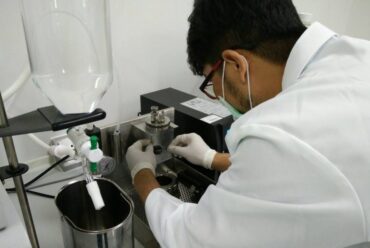Why Grain Inspection Matters
Grain inspection is a critical process within the agricultural industry that ensures the safety, quality, and standardization of grains. As grains play a fundamental role in human nutrition and various industries, it is essential to inspect them thoroughly to maintain their integrity and prevent any potential risks associated with consumption or utilization.
The Importance of Grain Inspection service
Ensuring Food Safety
One of the primary reasons grain inspection matters is to guarantee food safety. Grains serve as staple foods for millions of people worldwide. Any contamination or presence of harmful substances can lead to health hazards and foodborne illnesses. Through proper inspection, potential hazards can be identified and mitigated, safeguarding consumers’ health.
Quality Assurance and Standardization
Grain inspection plays a key role in maintaining the quality and standardization of grains. Different grains have specific requirements in terms of size, shape, and appearance, depending on their intended use. Inspection helps classify grains according to their quality, allowing buyers and sellers to make informed decisions and ensuring consistent products in the market.
Compliance with Regulatory Requirements
Regulatory bodies set strict guidelines and standards for grain quality. Grain inspection is crucial for compliance with these regulations. Countries often have their own grading systems and inspection protocols, and adherence to these rules is vital for the smooth flow of grain trade both domestically and internationally.
The Grain Inspection Process
Grain inspection involves a series of well-defined steps to assess the quality and characteristics of grains. These steps include:
Sampling
Sampling is the initial step in grain inspection. It involves collecting representative samples from grain shipments or storage facilities. These samples are then used for testing and analysis to draw conclusions about the entire batch’s quality.
Testing and Analysis
Various testing methods are employed to analyze grain samples accurately. These tests determine factors such as moisture content, protein levels, foreign material, and presence of contaminants. The results help assess the overall quality and safety of the grains.
Grading and Classification
Grading is a crucial part of the inspection process, where grains are sorted based on their quality attributes. Grains are classified into different grades, ensuring transparency and consistency in the market. Buyers can then make informed decisions based on the grading information.
Grain Inspection Technologies
Advancements in technology have significantly improved the grain inspection process. Several cutting-edge technologies are now utilized for more accurate and efficient inspections. Some of these technologies include:
Near-Infrared Spectroscopy (NIR)
NIR technology is used to analyze the chemical composition of grains quickly and non-destructively. It provides valuable information about moisture levels, protein content, and other essential attributes, aiding in the grading process.
Digital Imaging
Digital imaging allows inspectors to examine grains visually for defects, foreign materials, or infestations. High-resolution images provide detailed information for precise assessment.
Magnetic Resonance Imaging (MRI)
MRI technology is employed to detect internal defects and irregularities in grains without damaging them. It helps identify issues that might not be visible externally, ensuring a more comprehensive inspection.
Challenges in Grain Inspection
Despite advancements in grain inspection, there are still challenges that need to be addressed to maintain its effectiveness and integrity:
Contamination Risks
Grains can be exposed to contaminants during various stages, such as production, transportation, and storage. Ensuring proper handling and implementing preventive measures are essential to avoid contamination.
Infestation and Pest Control
Pests and insects pose a significant threat to grain quality and safety. Effective pest control measures need to be in place to safeguard grains from infestation during storage.
Storage and Transportation Issues
Improper storage and transportation conditions can affect grain quality. Mold growth, moisture accumulation, and temperature fluctuations are common issues that need to be addressed to preserve grain integrity.
Advancements in Grain Inspection
To tackle the challenges and improve grain inspection further, the industry is embracing technological advancements:
AI and Machine Learning
Artificial Intelligence (AI) and Machine Learning algorithms help analyze vast amounts of data quickly and accurately. These technologies aid in predicting grain quality, identifying defects, and streamlining inspection processes.
Blockchain Technology
Blockchain technology is being explored to create a secure and transparent system for tracking grains from farm to table. It helps maintain a tamper-proof record of grain quality and inspection results, enhancing traceability and trust in the supply chain.
The Role of Grain Inspection in International Trade
Grain inspection plays a pivotal role in international trade, particularly in grain-exporting and grain-importing countries. Some key aspects include:
Import and Export Regulations
Grain inspection is critical to comply with import and export regulations set by countries. Inspections help verify that the grain shipments meet the importing country’s quality and safety standards, facilitating smooth trade.
Dispute Resolution
In international grain trade, disputes may arise regarding the quality and quantity of grain shipments. Proper grain inspection records and reports serve as crucial evidence for resolving such disputes.
Read also: The Importance of Fertilizer Inspection and Testing For The Agricultural Industry
Grain Inspection Agencies and Organizations
Various governmental and non-governmental agencies are responsible for overseeing grain inspection processes:
Federal Grain Inspection Service (FGIS)
In the United States, the FGIS is a prominent regulatory agency responsible for inspecting and grading grains to ensure compliance with established standards.
International Grain Inspection Organizations
Internationally, organizations such as the International Standards Organization (ISO) and the International Grain Trade Coalition (IGTC) play vital roles in setting global grain inspection standards and promoting fair trade practices.
Ensuring Reliable Grain Inspection
To maintain the credibility and reliability of grain inspection, certain measures need to be implemented:
Training and Certification of Inspectors
Grain inspectors should undergo comprehensive training to enhance their knowledge and skills in the inspection process. Certification programs help ensure inspectors meet industry standards.
Accreditation and Accredited Laboratories
Inspection agencies and laboratories should seek accreditation from recognized bodies to demonstrate their competence and adherence to quality assurance practices.
Conclusion
Grain inspection service is an indispensable process that upholds the safety, quality, and standardization of grains in the global market. By employing advanced technologies and addressing challenges, the industry can continue to improve the inspection process and guarantee a steady supply of safe and high-quality grains.







